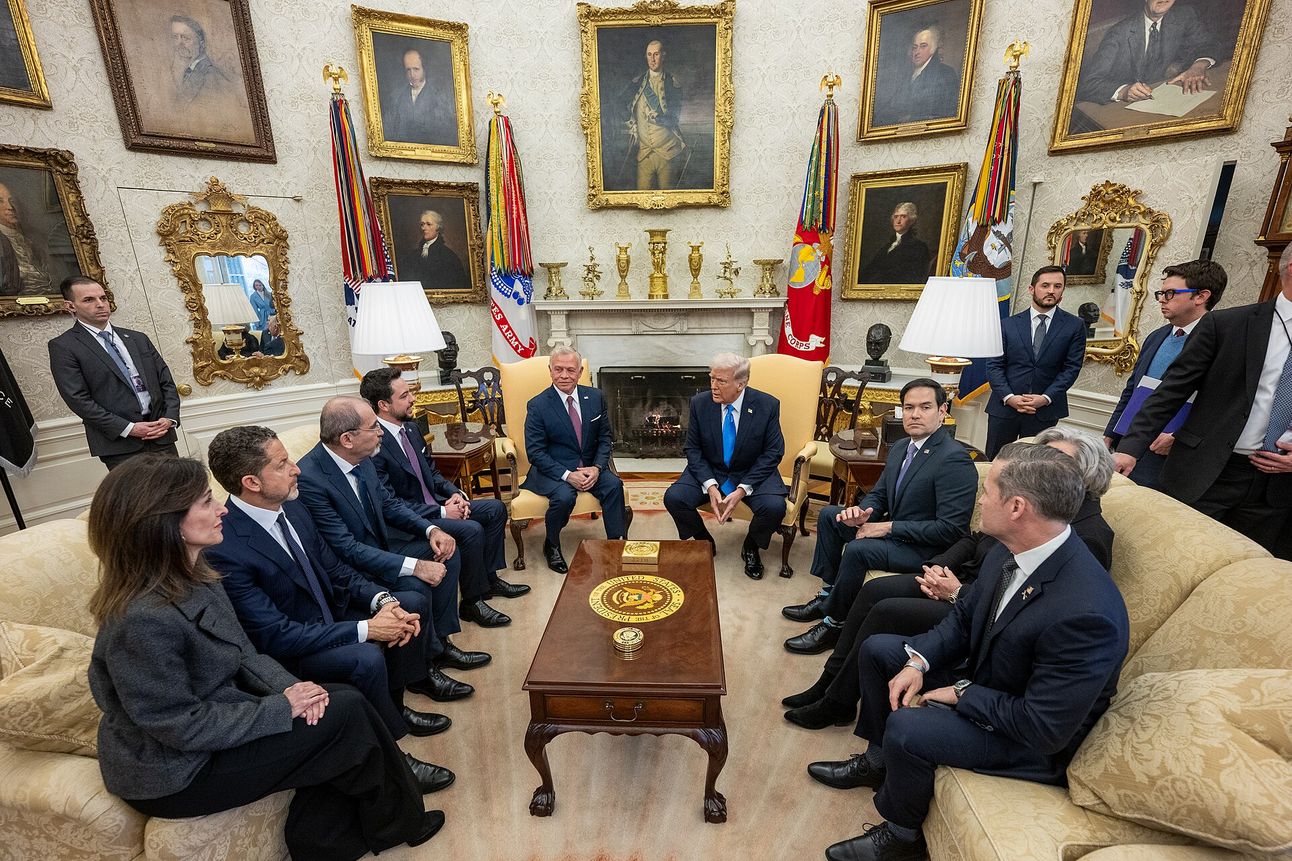What’s happening: President Donald Trump redecorated the Oval Office upon re-entering the presidency. While he initially went with a similar layout to his first term, he flooded the Oval in early February with more portraits than any president has ever used. Each is symbolic of his goals over the next four years.
Zoom out: Usually, there are three portraits on the wall opposite the president’s desk, with George Washington in the middle and two others (often scenic paintings) on either side.
Breaking the mold: It was President Joe Biden who changed this up, swapping Washington for Franklin D. Roosevelt, and surrounding his portrait with four others: Washington, Abraham Lincoln, Alexander Hamilton, and Thomas Jefferson.

Amr Alfiky, The New York Times
Going big: President Trump has nine portraits across from his desk.

Daniel Torok, White House
Some of these portraits are rare sights in the Oval, having never been seen there before:
Theodore Roosevelt built the Panama Canal and instituted the Roosevelt Corollary, which proclaimed the United States would force nations in the Western Hemisphere to fulfill their financial obligations and would prevent Europe’s influence in the New World. This is strikingly similar to Trump’s recent spat with Panama over Chinese influence.
Martin Van Buren was one of the two founders of the Democratic Party (the other being Andrew Jackson). Van Buren, Jackson’s handpicked successor, helped ensure their populist movement was not just a flash-in-the-pan — something Trump likely is hoping for his own movement.
Ronald Reagan: Trump also hung a portrait of Ronald Reagan, who, like FDR, reshaped his party, with his ideas becoming GOP dogma for decades.
Zachary Taylor: Taylor is a nearly-forgotten president who was noteworthy for dying in office in 1850 after eating bad cherries and milk. Before he was president, Taylor was the commander of the Army of Occupation of Mexico, having led American troops to a series of victories in the Mexican-American War. Trump designated Mexican cartels as terrorist groups on his first day in office, and reports indicate he is considering using the military to strike them.
A Democrat icon: Trump also has displayed a portrait of Democrat President Franklin Roosevelt. His incredibly popular populist movement, spearheaded by the New Deal, fundamentally reshaped the country and earned him four consecutive terms in office.
The populist-in-chief: Though not a portrait, Trump placed a statue of Andrew Jackson behind his desk. Trump has long identified with Jackson — America’s first populist. In Trump’s first term, he visited Jackson’s gravesite, calling him the “people’s president.”

Abe McNatt, White House
Why it matters: The Oval Office is one of the most famous rooms in America. Trump’s portrait selections share a roadmap to where he wants his presidency to go, and indicate his desire for a grand presidential legacy that lasts for decades to come.

